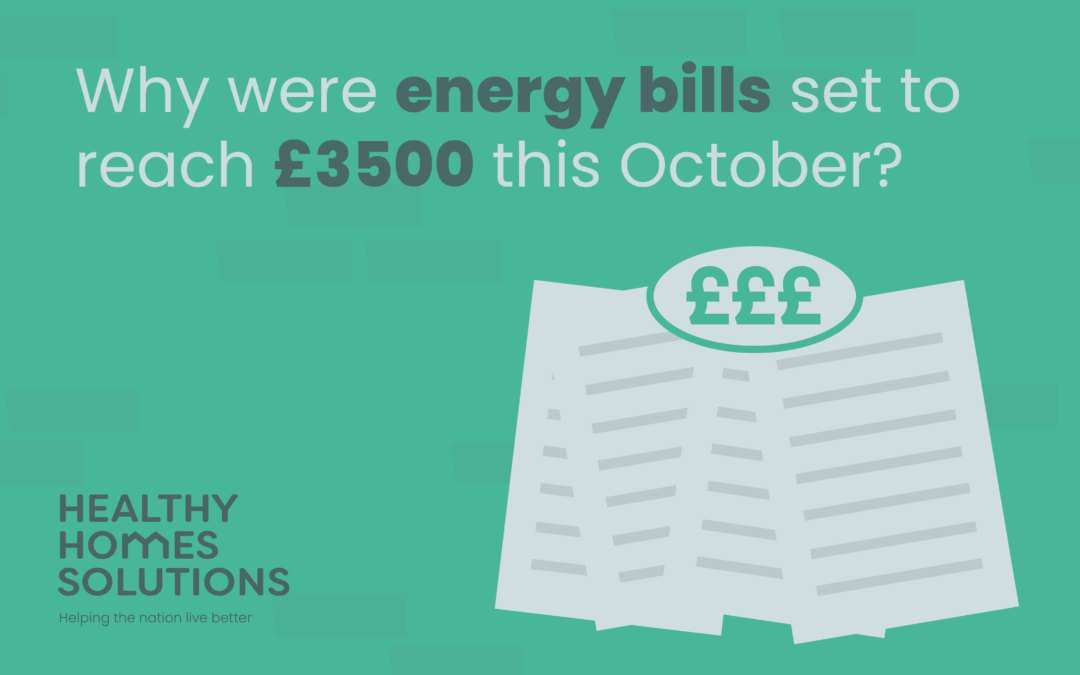In April, the country saw a substantial increase on their energy bills due to the price cap being raised by around £694. As a result of the increase, millions of homes have been struggling to make their payments. This cost-of-living crisis has put national fuel poverty at the worst it has been in decades and the last thing homeowners need is for their bills to rise even more. However, Ofgem have announced that the energy prices cap is set to rise substantially for the second time this year come October.
Adding to the initial 54% increase on the energy price cap that was implemented in April, the price cap was initially expected to increase a further 42% in October, however new estimations have predicted that the price could have increases by up to 78%. After starting at just £1277 at the start of the year, the price cap went up to a staggering £1971 in April and would have gone up again to eye-watering £3500 in October. This means that before the end of the year the energy price cap would have equated to 274% what it was in January, meaning we could have seen the number of people in fuel poverty in the UK increase tremendously.
Why was this happening?
Simply put, the increase in energy costs is a result of increased global market prices for energy.
As an effect of the ongoing war between Russia and Ukraine, the supply of Russian gas is limited and there are fears of additional disruption of supply. But despite the fact that Russian gas imports only make up around 3% of the UK’s energy usage, the rest of Europe has a heavy reliance on them, with around 40% of natural gas used in Europe being imported from Russia. The limited supply combined with the high demand across Europe has resulted in the market prices of energy hitting all-time highs.
If the energy suppliers have to spend more money on energy, their customers will have to pay higher prices for it.
What are the outcomes?
To help deal with increasing energy prices, a windfall tax is being imposed on companies that sell gas and oil that are profiting from increased prices, such as Shell who have reported around £7 billion in profits, Exxon who have made around £7 billion, Chevron who made £5.2 billion and BP who have made around £5 billion. Spain and Italy have already implemented a windfall tax, with Italy creating a €14 billion (£11.8 billion) support package to tackle energy costs, which includes providing a payment of €200 (£170) to low-income homes and pensioners, and Spain have lowered the VAT on energy bills.
Prior to the announcement of the windfall tax, Greenpeace said that Westminster “can and should 100 per cent direct the windfall tax to supporting people on low incomes with their energy bills”. Others, such as the Green Alliance, suggested that the money should be put towards improving and expanding on the home energy efficiency grants to increase the energy efficiency of low-income homes. Chancellor Rishi Sunak announced the details of the tax stating that a £15 billion support package is to be put into place, including a £650 one-off payment to low-income homes claiming benefits, a £300 extra payment to pensioners claiming winter fuel payment, a £150 payment to disabled people and a £400 payment to all bill payers that will not need to be repaid.
Additionally, due to the instability of energy prices, Ofcom have proposed to review the price cap four times a year instead of just twice, in an effort to reduce sudden huge price changes, making the changes more gradual and presenting customers with price reductions sooner. However, as the price cap has only been increasing thus far in 2022, this will just mean that these increased prices will only fall on customers quicker.
More frequent price cap revisions would also help energy suppliers avoid failure, because it would be easier for them to determine future demands and purchase the necessary amount of supply. Ofgem director Jonathan Brearley stated that if they had introduced these more frequent revisions sooner, fewer energy suppliers may have gone into administration.
How can homeowners deal with this?
The best action homeowners can take, would be to make efforts to improve their energy efficiency within their home. This includes lowering their gas and electric usage, purchasing more energy efficient appliances and products, taking advantage of any home energy efficiency grants they may be eligible for and making use of solar energy where possible.
These lifestyle changes can reduce their dependence on gas and electricity and lower their energy bills.
The future
Prime Minister, Liz Truss, announced the Energy Price Guarantee in September 2022 which would aim to set the average energy bill for UK households to £2,500 instead of the predicted £3,500. This would save the average UK home around £1,000 in October onwards. Although this is a sight less than the predicted prices, it is still significantly higher than what it was at the start of the year, so many homes around the country will still be struggling and could find themselves in fuel poverty this winter.
